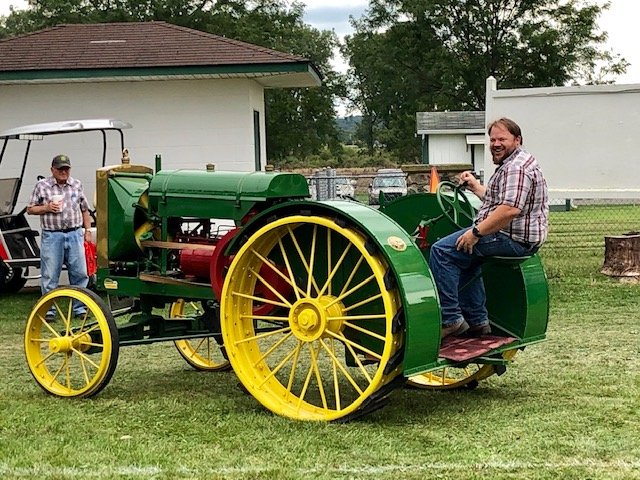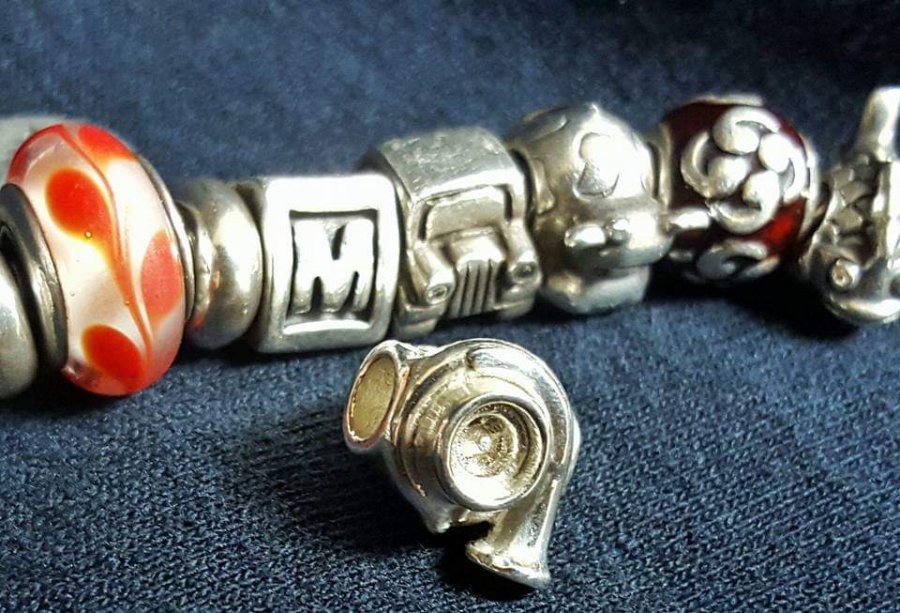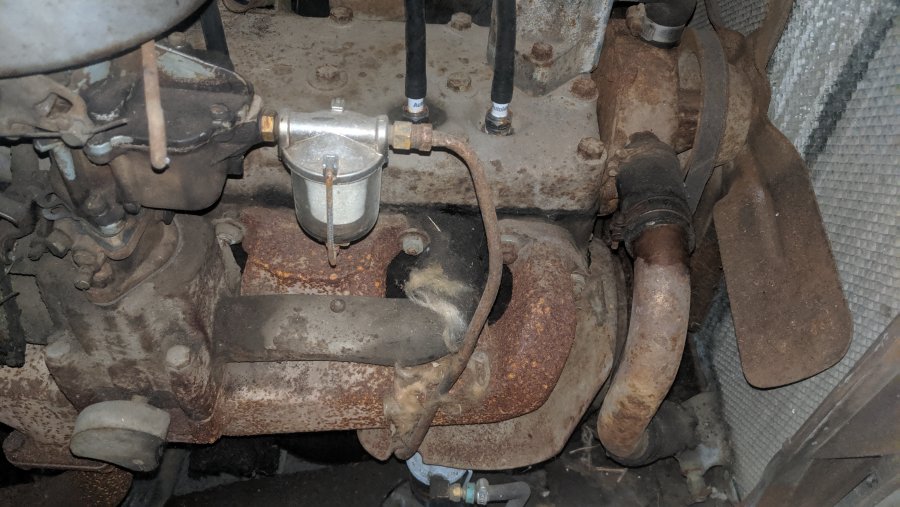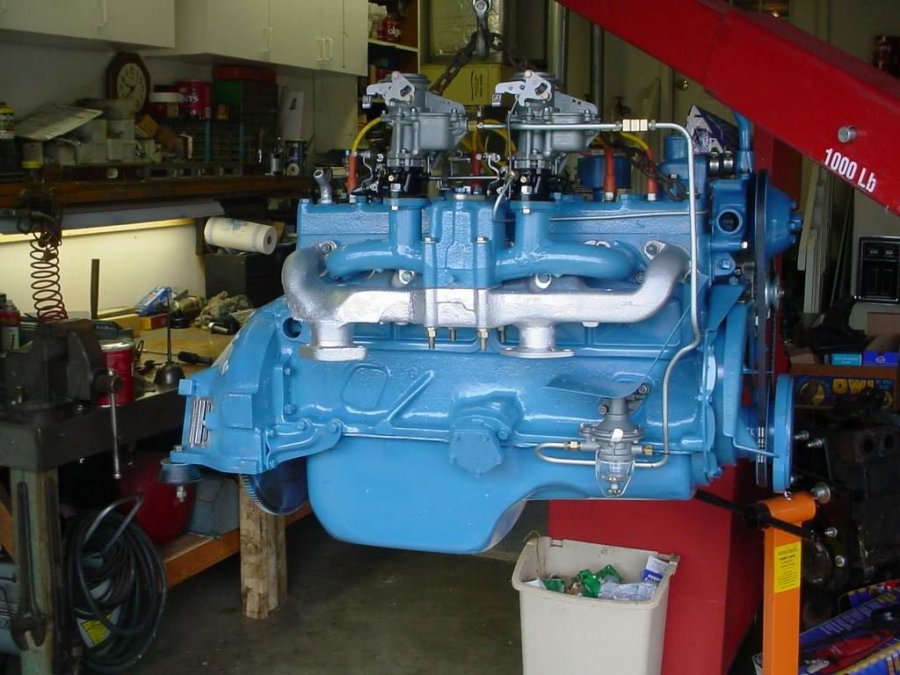-
Posts
613 -
Joined
-
Last visited
-
Days Won
9
Everything posted by HotRodTractor
-
If you were arcing through the plug wire - replace all the plug wires. That shouldn't happen. Also be aware that if things like your distributor cap have some age to them - you can have a similar issue with them arcing out or even between cylinders. I just went through this with an antique tractor that I was having issues with. It wasn't until I touched the distributor cap with the engine running (and missing) that I realized my cap was junk. It looked just fine. It did not however feel so great when I wasn't expecting. it. lol
-
Paul - that is at least a 1935 model year tractor. Perhaps an early one built in the 1934 calendar year. The oil bath air cleaner came out in 1935, but was commonly used as an upgrade to the early cast iron "core" style air filter - so that isn't definitive. What is definitive is that you have an oil pressure gauge instead of a "red head" pressure indicator. That is decidedly a 1935 and up feature and not readily adaptable to the older tractors as it also included an oil filter relocation. That tractor has to have a serial number higher than 119099 - and it has a 3 speed transmission instead of the 2 speed that would have been in 1934 model year.
-
Very nice Paul. I also have a 1934 D - its currently in pieces and working on a restoration. I'd love to see some more pictures of your example and get a serial number. I see that tractor has some "updated" parts on it. (Most notably the air cleaner - it has the newer style which was a common upgrade if anything went wrong with the original). I was going to take my 730LP Standard to the Labor Day Festival - its only a few miles from home so I figured I would just drive it..... got about a mile from home and it started missing badly.... I figured a spark plug wire came out of the cap since I just was working in that area the night before.... nope. That cap was arcing all over the place - just try to touch it anywhere and you would get hit. I limped it back home - went and watched the parade - found a new cap in the swap meet area - came home swapped it out - purred like a kitten. Oh well.
-
Nothing that I'm worried about. Lol
-
I had the great honor of driving a very special tractor for a few minutes at our local Labor Day Festival in West Liberty Ohio. Here I am on the "Bathtub D": This was a prototype tractor built in 1917 by the Waterloo Gas Engine Company before John Deere purchased them in 1918. This tractor is literally the first in a long line of prototypes that spanned years and gave birth the iconic John Deere D. This tractor was believed to be destroyed like all of the rest of the prototypes - except the transmission case with gears, axles, and the crankshaft was unearthed in 1992 during the excavation of a parking lot - it was used as fill material.
-
Very nice! I'm lucky enough to have the Dodge truck dual cleaners - everytime I start looking at air cleaners for the project - I keep coming back to simply just tweaking those and using them. I'm sure some purist would hate me for it.
-
I haven't purchased them yet - but it looks like Holley 1904 air cleaner adapters might be made to work on these B&B carbs - perhaps a longer bolt. Then you have a wide selection of air cleaners to choose from. I'm unsure if I am going to go the 1904 adapter - or take a pair of oil bath air cleaners and gut them and install paper elements in them for my pickup. I'm kind leaning toward the modded and gutted oil bath - with some windows cut in the sides and some stainless mesh wrapped around the inside. Might give a unique and clean look. Just food for thought.
-

Pertronix back to points conversion
HotRodTractor replied to '50 B2C's topic in Mopar Flathead Truck Forum
Pertronix 1362 Installation instructions If you read the above linked PDF of the assembly instructions for the Pertronix ignitor it does appear that some modification is necessary as Merle pointed out. Might be less painful to pick up a new distributor and do a tune up on it. -

Looking for advice about an A833 swap.
HotRodTractor replied to Fargone's topic in Mopar Flathead Truck Forum
Agreed. Fabricate a bracket to install the shifter where needed and work out the linkage issues. I suggest making a cardboard mock-up to get started - its probably going to take a couple of iterations to get the shifter close to where you want it and make the linkage all work as intended. Making a plate that attaches to the factory shifter mounting points and extends forward and up. stabilizing the front of that bracket using the tailshaft mounting bolts would be pretty easy as well. -
For the most part - these engines are grouped into two main styles - a 23" head and a 25" head. Start there - if you have a 23" long engine - then you can "easily" drop in another 23" long engine - OR - you can make some tweaks and adjustments and maybe fit a 25" engine (can be more cubic inches - 251ci and 265ci are pretty common). There is some differences in engines depending on application - camshaft in a power unit or a tractor or a combine might not work quite as well as one in say a car or a truck. Cranks can have different number of holes where the flywheel bolts up. Intake/exhaust manifolds can be different. Distributor may or may not have vacuum advance, there is a difference between internal and external bypass when it comes to the heads/thermostat housing setup. Some 25" engines have full flow oil filtering instead of bypass. Engines are pretty easy to come by if you are patient. I have several 25" engines in the shop - including a couple of 265ci engines - one of which has factory dual carbs and dual exhaust. If your Dodge engine is an American version - its 23" - if it came from north of the border - its probably 25" - grab a tape measure and know for sure.
-
Had it out on the town last night going to a local business party for the staff, friends and family. Ran into an elderly gentleman that bought a '48 P15 4 door as his first car for $400 used. He was all kinds of excited to look at the car and bring back memories. He ran a rural paper route with it until he hit a deer. I finally went and topped off the tank - right at 14mpg for the return trip back home last weekend and my little local drive last night.
-
Lots of things can cause the "carb to pop" Carb is adjusted too lean Vacuum leak Timing issues So can you help describe what this popping is like, or when it is occurring? You say it idles nice, but still pops? Does that mean its only popping when higher in the RPMs or under load? I'm probably forgetting lots at the moment - but the bottom line is we need more details to help.
-
If it's printed directly as a metal, it is that metal. Get some dimensions together and I'll have a feel for the cost of printing. Machining might be cheaper, it all depends on the complexity of the part. Simple parts are better machined, complex parts are better printed.
-
This is a turbocharger charm bracelet bead that I design for my girlfriend and printed directly in silver and then polished it up.
-
With some dimensions and pictures I might be able to 3d model it and then since it's small, I could get it 3d printed either in a stainless or say a brass infiltrated part that can then be polished up and chromed.
-
If you notice - this engine has a glass bowl at the pump and the carb. Just trying to give you and idea of how the fuel lines can be ran.
-
Another example of how to run a fuel line - this is my 1-1/2T truck - its still fence row fresh - but purrs like a kitten.
-
-
What about the P15 Picnic USA event that is starting in Southern Vermont? P15 Picnic USA Link
-
I have a 48 Plymouth - it has a larger Desoto engine installed with a dual carbs, dual exhaust, camshaft, etc.... feeding power to a T5 overdrive transmission and a newer rear axle with 3.55 gears and upgraded brakes all around to help it stop. I just had it on a 55 mile stretch of interstate over the weekend and cruised along at 80mph. That is probably the exception to the rule - but the point is, with some tweaks to the car highway speeds are not unobtainable. It just depends on what your goals for a vehicle might be.
-
If its something I see myself needing just a part of within a couple of years, and I have room for it, I pick it up. I have narrowed my focus down so I'm not buying every flathead mopar that pops up (only interested in the 25" motors..... or maybe a 30" if one pops up close).
-
Hey Don! Glad to see you posting!
-
Don's Photobucket T-5 Album: HERE Maybe you can gleam what is needed off of his picture album. I looked for few minutes and didn't find any specific thread, but I do know my car has a 4 bolt flywheel on an 8 bolt crank - and to make the whole shebang work, 3/8" was shaved off the starter mounting area on the bell housing.
-
Maybe i drive faster than Don? lol Load does have a fair amount to do with it. Also - it never really overheated and worked fine on the interstate - my issue was once I got off and had some stop and go traffic that the heat caused some issues. Might be fuel related only because I filled up just before getting on the interstate. It also could be coming back to a previous discussion of a heat soaked coil, or perhaps it was just hot in general and was boiling the gas in the line/carbs. Pretty sure its a 180* t stat based on Don's Photobucket. I've got some fuel resistant heat sleeve that I am going to throw on the gas line, but i wanted to try some other stuff first. Being methodical takes time, but its the only way to say what specifically the issue was. I'm likely being a little picky about it too. I know that its few and far between to have one of these cars with a flathead go down the interstate at 80mph for a sustained period of time. I was looking at a map - and it looks like I ran it there for right about 55 miles for the most part. Ran great going down the road, it just got warm enough to be unhappy right after getting off the interstate.








